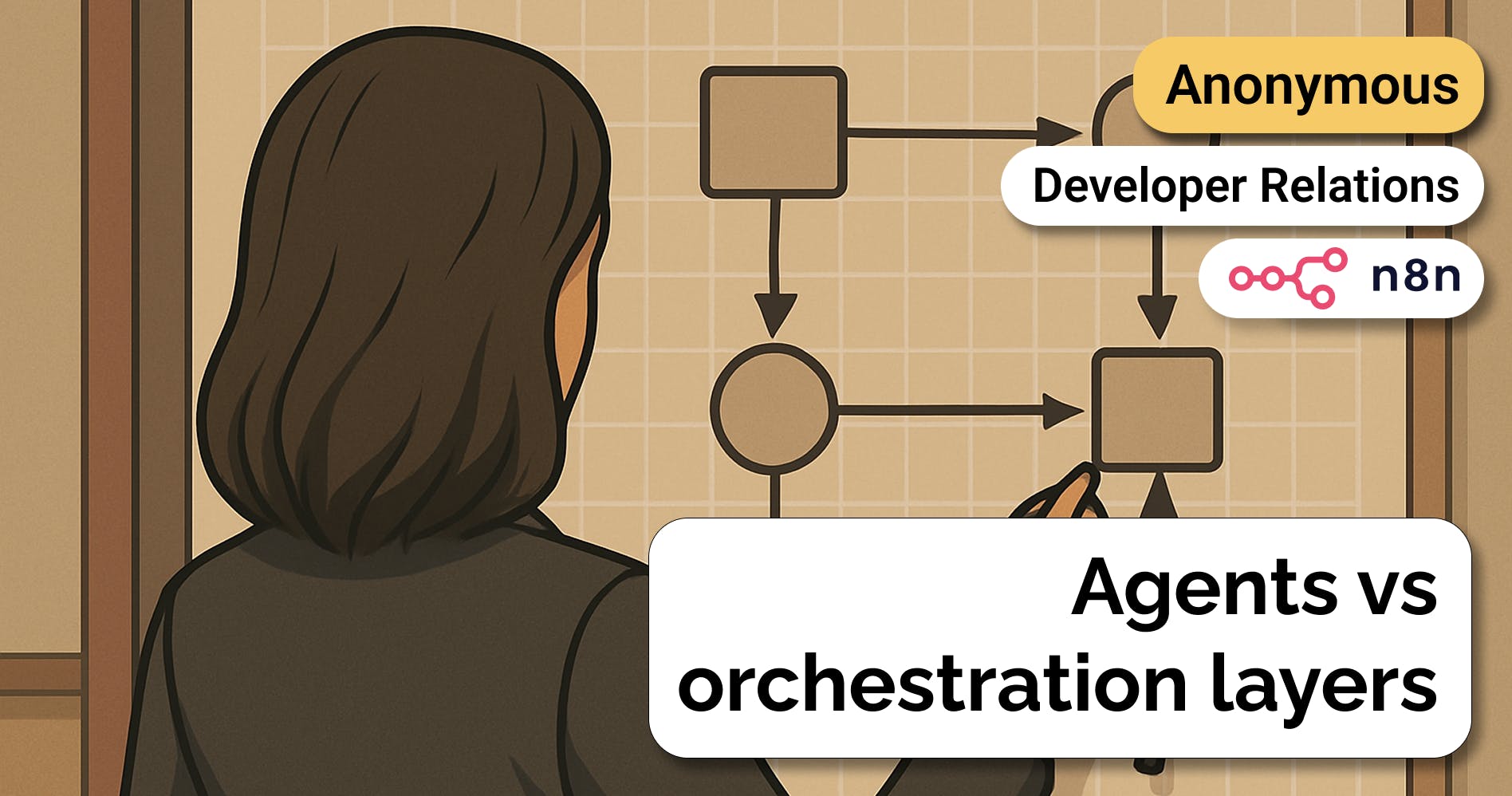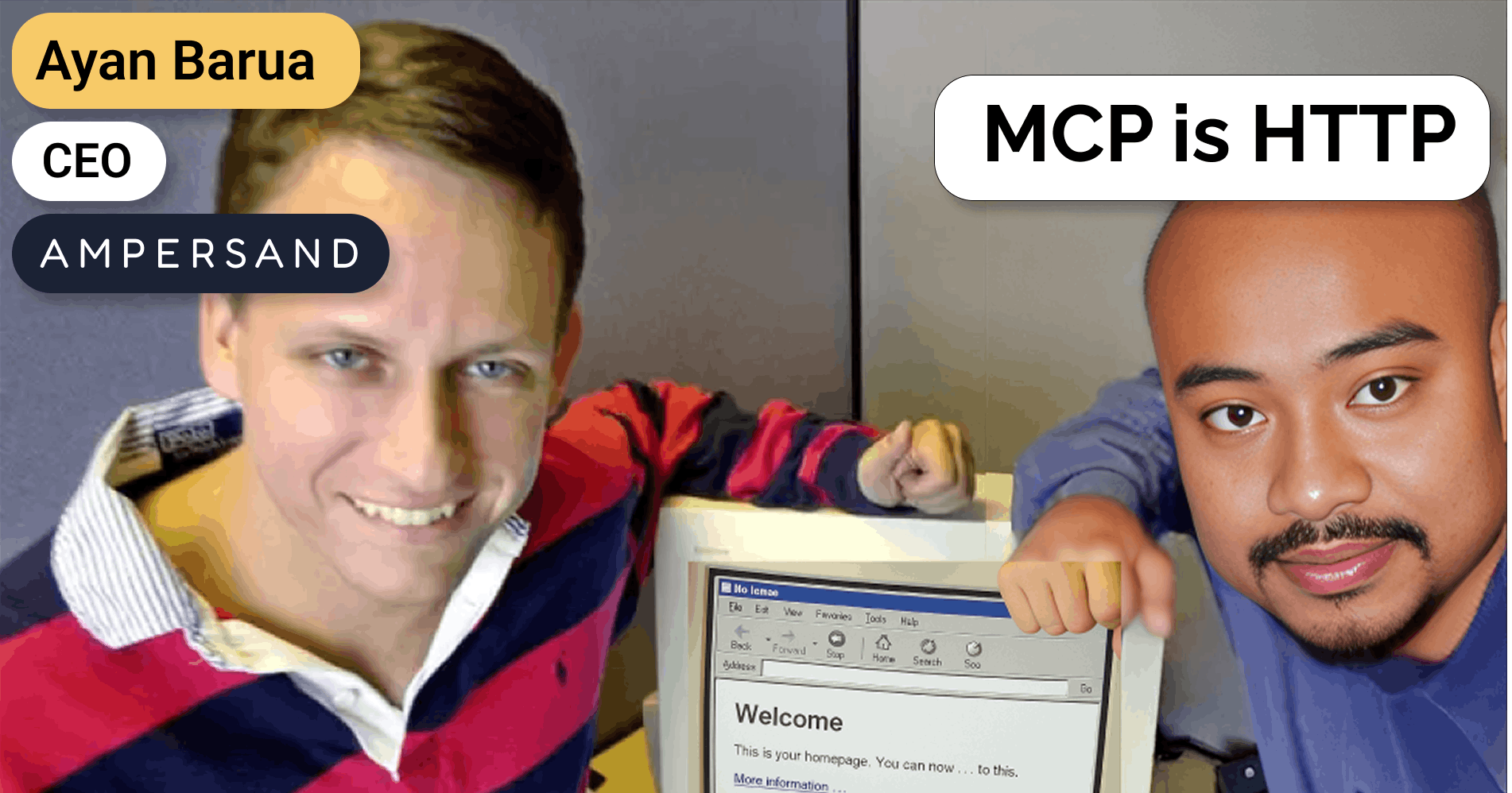Wade Foster, co-founder & CEO of Zapier, on AI agent orchestration
 Marcelo Ballvé
Marcelo Ballvé

Background
With the launch of Zapier MCP (model context protocol), we reached out to Wade Foster, co-founder & CEO of Zapier to learn more about its new positioning around MCP and AI agent orchestration.
Key points from our conversation via Sacra AI:
- Zapier is betting that they can ride the AI and MCP wave in much the same way it rode the SaaS and API proliferation wave—by offering less & non-technical users the tools they need to stitch together different products, it'll help prosumers and SMBs eat up the long-tail use cases that horizontal and vertical AIs leave on the table. “[I]t feels like history is rhyming. People will hook in a few major MCP players, but they don’t have the time to do long-tail integrations. That’s what [Zapier is] great at: connecting the entire world, not just the big dogs. So, it’s easy to have a hot take and say, “Oh, MCP will make Zapier obsolete.” But the moment you scratch at it, the same old patterns emerge. And if we play our cards right, we can continue to be the interoperability layer between all these tools.”
- Pushing back on the one-model-to-rule-them-all narrative, Zapier is positioning for a highly fragmented world of niche & specialized agents, where it’s the scaffolding built around the LLMs—featuring traditional deterministic workflows—that drives agent reliability, cost savings and performance. “[M]ainstream media might have you believe we’re going to get one super-model: an AI god that does everything. But boots on the ground, that’s not what’s happening. What we’re getting is specialization: Agents that are really good at a particular task. One might be really good at math. One’s good at voice-to-text. One’s good at coding. . . . They become these micro-agents and you want to pass the output of one to the other. That’s where you get these chaining effects that are really important. That’s orchestration.”
- The enterprise presents a new, upmarket opportunity for Zapier (historically focused on prosumer & SMBs), where shallow AI usage has plagued widespread attempts at AI transformation and Zapier’s pre-baked workflows can translate what’s worked for teams & departments across organizational boundaries. “We pay attention to our power users: the folks on the far right of the usage curve. . . . We can come in [to an enterprise customer] and say: "Here's how you transform your entire department. This isn't just a tool for rewriting headlines, this is how your entire lead-management journey and customer experience is upleveled. This is how speed-to-lead gets faster, how you close people with a better experience, how conversion rates go up. . . . It’s not about search getting a little bit better, or text manipulation. . . . There’s a place for Zapier to come in and support teams in rethinking all of those workflows.”
Questions
- What are the clearest discontinuities you've seen in the way Zapier is used pre—and post-AI?
- So, on the one hand, non-deterministic use cases with LLMs open up more possibilities than pre-AI Zapier could support. But on the other, using Zapier to insert more deterministic workflows into an agentic sequence, you can increase reliability. Is that right?
- When we spoke with Mike [Knoop, Zapier co-founder] a couple years ago, he said he expected a lot of innovation on the interface side of AI. What’s sticking with users besides chat interfaces, where do you see opportunity?
- I like the idea of “interface-less.” Maybe that connects to Zapier’s positioning: Zapier isn’t app automation or AI-led automation, but AI orchestration. Is that a good way to think about it? Orchestration replaces visible interaction with AI activity handling things for you in the background?
- The naive view is that orchestration is mostly about choosing which model to use: Claude for this, GPT-4 for that. Multiplexing. What you're describing sounds more granular, like something else entirely.
- How has Zapier approached the vibe coding trend? Is it a different market or is there an overlap with what you're offering customers in your platform via automations and AI?
- Should we think about Functions as an added capability you're giving nontechnical users, or should we think about it like the part of a Venn diagram where technical and nontechnical builders meet in the middle?
- Turning to MCP now. On the surface, MCP looks like an encroachment of LLMs onto Zapier’s core turf. What does that view get wrong?
- Do you see a world with MCP where, because there are so many agents proliferating and so many available even within apps, Zapier helps users unbundle AI apps? Maybe I just want two or three agents from one app, and go to another app to continue the workflow—does that make sense?
- You’ve had a long-standing relationship with OpenAI. What’s missing from their approach to orchestration that Zapier can contribute? And what does that say about the evolution of your positioning vs. OpenAI or other foundation models like Anthropic?
- What’s stopping OpenAI from helping non-technical users stitch these experiences together? They launched the GPT Store, which was a step toward enabling that, even if it seemingly didn’t catch on.
- Looking ahead, what do you think the biggest growth drivers for Zapier will be in the next couple years?
- In enterprise AI, we’ve seen companies come in like Glean (from the search side) and Writer (from text gen). You mentioned your workflow data. What else gives Zapier an edge in this space?
- A recurring buyer concern with enterprise AI, as you mentioned, is security and privacy. How do you respond to enterprises who are cautious about connecting data across tools?
- One thing we’re seeing in enterprise AI is shallow usage, like one-shot searches, casual prompting. Have you encountered that? How do you help teams go deeper?
- And how do you help with that? Templates?
- On pricing, there’s been a shift toward outcome-based and usage-based pricing. You’ve done usage-based for a while now. What do you see changing in how AI pricing is done, or do you think we’re already seeing a kind of steady-state emerge around AI pricing?
- You mentioned earlier that agent reliability is hard for enterprises. Skeptics might say, "This sounds great, but LLMs still make too many mistakes" How would you answer?
- To close, paint us a picture of the AI ecosystem 3 to 5 years from now. What does it look like, and what’s Zapier’s role in it?
- And in that world, do CRMs and issue trackers become less important?
Interview
What are the clearest discontinuities you've seen in the way Zapier is used pre—and post-AI?
The way folks use Zapier today involves a lot of use cases that benefit from having an LLM be part of a traditional workflow. While all the hype is around agents, and there are awesome capabilities possible with agents today, where the tech is right now—particularly when enterprises are trying to adopt agents—it's really tricky. Agent reliability is hard.
When agents are used, you're trying to break down tasks into tiny subtasks and chain them along. If you're having an agent do every single one of those and the agent's overall reliability is not that high, your chances of getting the output you want aren't strong.
However, you can improve reliability by inserting traditional workflows. You can move data from place-to-place in a very deterministic way, getting reliability and cost advantages. Then you can hit an LLM at a particular step in the process with context you've collected, using a prompt you've optimized. This gives you the output that empowers you to get the results you want.
For example, I was talking to a customer yesterday who uses Gong for customer conversations. They take Gong transcripts, fetch information from Salesforce, gather web-search data and lead-enrichment data. Then they hit an LLM to do a term propensity model to determine how likely a customer is to stick around, generate a case study, or provide coaching for sales reps based on voice tone, sentiment, and other factors.
They're able to chain these things along, working with unstructured data like Gong transcripts and web search data, which is different from pre-ChatGPT era Zapier where everything was deterministic and structured. When you can work with unstructured data using an LLM, it opens up an entire universe of capabilities that weren't possible before.
Doing this inside a traditional workflow builder is an incredibly powerful and consistent way for enterprises to operate reliably versus a pure agentic architecture—though we have pure agentic architectures as well. There's a whole spectrum of when you want to use one versus the other.
So, on the one hand, non-deterministic use cases with LLMs open up more possibilities than pre-AI Zapier could support. But on the other, using Zapier to insert more deterministic workflows into an agentic sequence, you can increase reliability. Is that right?
I think that’s correct. I would add that even if you are chaining across a bunch of agentic actions, you can still have benefits from doing those in a deterministic way versus letting the agent choose every step of the way. It allows you to take more control over the scenario. You’re guiding the LLM to the correct answer. You’re saying, "Go this direction. Do these things," versus letting it pick. That gives you more control over the experience you want.
When we spoke with Mike [Knoop, Zapier co-founder] a couple years ago, he said he expected a lot of innovation on the interface side of AI. What’s sticking with users besides chat interfaces, where do you see opportunity?
Honestly, interface-less stuff is really popular. Basically being able to hit the APIs, whether through Zapier’s workflow builder or through our agentic products, so you’re having AI power certain things behind the scenes. You have AI powering things invisibly.
Second is voice, but really it’s voice-to-text. People are taking call recordings, transcripts, voice notes, voice memos, etcetera, and using those to kick off an agent or a workflow.
In both those cases, it's kind of interface-less.
The third is computer use, where you’re web scraping or pulling context from a PDF, website, email, whatever.
But I also think we're going to see different paradigms evolve on the interface side. I think chat is a really efficient way for humans to give feedback to LLMs. We like being able to chat and offer feedback, so human-to-agent that's going to remain a pretty popular interface. But that’s not the best way for LLMs to present information back to humans. We’re going to see a lot of interface innovation in the agent-to-human direction. Maybe the agent will build on-demand interfaces or decide whether to show a chart, a memo, or a dashboard view. Humans ingest information in all sorts of different ways that are not just simply chat.
I also think many common and proven interfaces we already have—documents, spreadsheets, code editors, email inboxes—will have AI versions that feel really good. We all jumped to chatbots because ChatGPT was the first major AI product released, but almost all interfaces will have innovation associated with them because of AI.
I like the idea of “interface-less.” Maybe that connects to Zapier’s positioning: Zapier isn’t app automation or AI-led automation, but AI orchestration. Is that a good way to think about it? Orchestration replaces visible interaction with AI activity handling things for you in the background?
We like this term "orchestration" because it represents how we’re seeing modern AI being deployed. There are two trends on this front. First, the tech tree, or where the technology is going. Second, how the most sophisticated users are behaving.
On the tech tree side, mainstream media might have you believe we’re going to get one super-model: an AI god that does everything. But boots on the ground, that’s not what’s happening. What we’re getting is specialization: Agents that are really good at a particular task. One might be really good at math. One’s good at voice-to-text. One’s good at coding. One’s good at whatever domain expertise comes to mind. They become these micro-agents and you want to pass the output of one to the other. That’s where you get these chaining effects that are really important. That’s orchestration.
From the customer angle, we see a similar phenomenon. Whether they’re interacting with AI, their own data, APIs, or MCP, the customer is thinking in steps. First, get the lead. Then enrich the data. Then format it into a prompt. Then land it back in a database, tee up an email, or send a Slack alert. They're just breaking down the steps, bit-by-bit and that's orchestration as well.
So even though there might be a workflow builder or agent builder somewhere that a human uses, the way we interact with that process is predominantly going to be an invisible interface.
These workflows are built through a workflow builder or agent builder, which is the interface humans use to build them. But how we interact with those is predominantly an invisible interface. Or maybe there's a human-in-the-loop step where the AI outputs something and you respond. Those human-in-the-loop interfaces will probably look like the ones we already use. An approval in Slack. A thumbs-up or thumbs-down in a web app. I think a lot of the common UI patterns that we have for collaborating with other humans will feel very similar to how agents collaborate with humans. So you'll also have interfaces that are spun up to facilitate those interactions.
The naive view is that orchestration is mostly about choosing which model to use: Claude for this, GPT-4 for that. Multiplexing. What you're describing sounds more granular, like something else entirely.
Part of the equation is that you’re mixing models and tools that are better at certain things. But I think it goes beyond that. You're gathering data sources. You're collecting context. You’re pulling in prompts. You’re putting all these things together and then you’re interacting with an LLM. But the LLM is just a piece of the overall workflow. It’s not the whole thing.
How has Zapier approached the vibe coding trend? Is it a different market or is there an overlap with what you're offering customers in your platform via automations and AI?
Our focus has always been on the non-technical user, and historically that meant working through UI building blocks more than with code as a core primitive.
More recently, vibe coding tools have allowed a wider range of folks with varying technical skills to interact directly with code in interesting ways, which is a really exciting vision. That’s why we invested in things like Functions. It's a code-first tool that allows you to configure triggers, work with APIs, and define entire Zapier workflows, all with code and within a web IDE. So you can work in code versus no-code if you prefer to do that. We also have Custom Actions, which let you generate new triggers or actions on the fly. With Custom Actions, you can spin these triggers or actions up to enhance your workflows, even if you don't know how to code.
So, we have elements of the platform that cater to what might be described as vibe coding, but we aren’t building a product that is solely focused on that. It’s intermixed within the broader automation platform.
Should we think about Functions as an added capability you're giving nontechnical users, or should we think about it like the part of a Venn diagram where technical and nontechnical builders meet in the middle?
We think of it as a bridge between technical teams and nontechnical teams. There’s a fair amount of surface area in the middle there that’s pretty blurry. Are you an engineer? Are you not an engineer? That used to be a pretty cut-and-dry thing.
It's not so cut-and-dry anymore. There’s this new archetype of person emerging that I don't know what to call other than a “builder”—they just make stuff. They're adept at working with code, but aren’t what you’d think of as a traditional engineer.
Having Functions and similar features allows them to build more types of use cases and experiences, and helps them collaborate better with more traditional engineers. Engineers can understand functions and work in a form factor that’s familiar to them.
Turning to MCP now. On the surface, MCP looks like an encroachment of LLMs onto Zapier’s core turf. What does that view get wrong?
What we saw in the last decade was a Cambrian explosion of SaaS tools. Zapier supports 8,000 different applications out of the box, plus many more private apps on the platform. We've been talking about how agents will have the same proliferation—there won't be one super agent that does everything. If we thought SaaS had a Cambrian explosion, agents will be even bigger, and the interoperability challenges between them will be orders of magnitude more complex.
It was clear there needed to be a mechanism for helping agents work with each other, just as APIs help SaaS talk to each other. We got excited about MCP because history seemed to be rhyming. You'll have an API that helps people integrate SaaS services, and with MCP, you'll have a tool that helps agents work together.
We can do things that a lot of MCP servers can’t. You can access all your tools under one roof. We offer built-in access controls. One of the early challenges with MCP has been around security and control and who can access what. With Zapier, you can enable or disable specific apps, actions, API endpoints, with precision. That makes us a more trusted provider. Then, of course, it comes from Zapier, with more than a decade’s worth of evidence in the market that it’s really good at this type of thing.
Based on our early conversations with developers, it feels like history is rhyming. People will hook in a few major MCP players, but they don’t have the time to do long-tail integrations. That’s what we're great at: connecting the entire world, not just the big dogs.
So, it’s easy to have a hot take and say, “Oh, MCP will make Zapier obsolete.” But the moment you scratch at it, the same old patterns emerge. And if we play our cards right, we can continue to be the interoperability layer between all these tools.
Do you see a world with MCP where, because there are so many agents proliferating and so many available even within apps, Zapier helps users unbundle AI apps? Maybe I just want two or three agents from one app, and go to another app to continue the workflow—does that make sense?
I think that’s a great example of the dynamic: You’ve got a mix of tools and resources available to you, and each one is good at its part of the job. But a big part of their effectiveness is how well they work together.
That’s orchestration again. An LLM out-of-the-box is powerful. But it’s more powerful when you give it context, when it can pull in information, act in other systems, and pass outputs downstream.
It’s the same for SaaS tools. Salesforce gets more valuable the more customer data it holds. These systems benefit from working together. When tools work in tandem, you get a better customer experience.
You’ve had a long-standing relationship with OpenAI. What’s missing from their approach to orchestration that Zapier can contribute? And what does that say about the evolution of your positioning vs. OpenAI or other foundation models like Anthropic?
If you look at OpenAI, Anthropic, and Google, the main tool they offer to consumers is a chatbot. You have to sit there and chat to get value out of it. That’s the primary experience.
They also have APIs. And developers use those to spin up all kinds of rich AI products. But there’s a whole group of people who aren’t developers, who aren’t adept at code, but still want to build those kinds of experiences. That’s where Zapier comes in.
Zapier lets those folks build workflows, products, UIs, agents, data stores and AI experiences beyond chatbots. It gives non-developers that builder power and orchestration mentality that a developer has natively.
What’s stopping OpenAI from helping non-technical users stitch these experiences together? They launched the GPT Store, which was a step toward enabling that, even if it seemingly didn’t catch on.
I think OpenAI is focused on the most general-purpose capabilities they can deliver. And that leaves plenty of room for independent developers to go deeper.
There’s a need for vertical products. There’s a need to explore deeper capabilities. And Zapier is providing access for more people to go and build these solutions. Maybe OpenAI or Anthropic builds more in this direction. But I’ve heard Sam [Altman] say many times that OpenAI’s job is to build the best, most general-purpose models. So there’s going to be a need for products that help people explore the long-tail.
Looking ahead, what do you think the biggest growth drivers for Zapier will be in the next couple years?
Two big things. First, opening up the aperture around AI use cases. A single AI step inside a workflow is great, but how do we make sophisticated agent experiences accessible to nontechnical builders?
Second, enterprise. Zapier has traditionally been focused on SMBs. But we’re building a meaningful enterprise business now. And when we talk to VP/C-levels, most of them say AI adoption is still exceptionally small. These folks want help figuring out what the best use cases are and how to bring them to market.
There, we’ve got 14 years of workflow data. We know what works great for GTM teams, finance, HR, ops. We know how to deliver leverage beyond "Here's a chatbot, go do some great research with the chatbot." That's a fantastic use case, but there's so much more these tools can do for enterprises. When you combine an LLM with Zapier, you can solve many problems, but because people haven't done it much, there's a whole invention/discovery element that enterprises are under a lot of pressure to figure out in real time.
In enterprise AI, we’ve seen companies come in like Glean (from the search side) and Writer (from text gen). You mentioned your workflow data. What else gives Zapier an edge in this space?
First, we’ve always been the most connected. We already hook into all the different tools that these companies use. That interoperability layer is pretty much a solved problem if you're working with us.
Second, orchestration. How do you actually pull context from all your different tools and chain them across various different models? How do you get fully automated, “hands-off keyboards” AI, with humans in the loop only where you need them? Zapier can do all of that. It’s the best platform for building those fully-automated, high-leverage experiences.
Third, you combine that with the admin controls, provisioning, and governance that we've layered into the platform. You can specify which applications and endpoints to turn on, provide access to specific teams for specific tools, and get the type of environment and visibility for automation that you don't get in many other environments.
A recurring buyer concern with enterprise AI, as you mentioned, is security and privacy. How do you respond to enterprises who are cautious about connecting data across tools?
We only have access to the systems customers grant us access to, so there’s that. What we hear a lot is questions around the intelligence layer. Who controls the data that's going in and out of the LLM at the end of the day? The good news there is that we will hook into your own preferred LLM provider. So you bring your own keys, bring your own tokens, etcetera. There's a suite of tools that enables Zapier to hook into the environment you've set up, rather than forcing you to adopt a certain way of doing things.
One thing we’re seeing in enterprise AI is shallow usage, like one-shot searches, casual prompting. Have you encountered that? How do you help teams go deeper?
We’ve seen that. That’s where we can really help.
We pay attention to our power users: the folks on the far right of the usage curve. They’re already doing transformative things. So we look at what they’re doing in marketing, sales, finance, support and then we turn those into playbooks.
We can come in and say: "Here's how you transform your entire department. This isn't just a tool for rewriting headlines, this is how your entire lead-management journey and customer experience is upleveled. This is how speed-to-lead gets faster, how you close people with a better experience, how conversion rates go up."
I think that's what folks are really hoping for with AI. It’s not about search getting a little bit better, or text manipulation. Those are valuable. But I think there's this next tier when you look at the team layer and the organizational layer and all of a company’s critical workflows. There’s a place for Zapier to come in and support teams in rethinking all of those workflows.
And how do you help with that? Templates?
It’s templates, playbooks, it's solutions engineers helping people get set up with these things. We study the use cases by industry and role, and then we help customers implement what actually works.
On pricing, there’s been a shift toward outcome-based and usage-based pricing. You’ve done usage-based for a while now. What do you see changing in how AI pricing is done, or do you think we’re already seeing a kind of steady-state emerge around AI pricing?
Oh, I don't think there is a steady state in AI pricing at all.
Over time we've tried to figure this out: How do we ship more features, you know, at the same or lower cost to customers? And how do we make it simpler over time?
I won't say that we've always done a perfect job on that last dimension—it’s hard to simplify when you’re simultaneously launching new features and capabilities. But overall I think customers do really appreciate the flexibility we offer.
We are definitely big fans of usage based pricing. A little over a year ago we changed pricing to add pay-as-you-go. As a user, you can decide how much usage to pay for within your subscription level and how much you’ll pay for on a pay-as-you-go basis. Mechanisms like that allow the customer more options and more control over their spend, which they appreciate.
I think we have an advantage here in that Zapier is a private, mostly founder-held company. That allows us to align with the customer on pricing, whereas venture-backed and public companies are often landing customers at big contract values and then hoping and praying that the usage grows to actually justify the price. Whereas, we're perfectly happy to accept customers based on their current usage volume. Even if it isn't a massive contract, we're fine with that. We want customers to come in, use the product, love it, get to know it, and then grow at their own rate.
We don't feel that pressure to gouge you for dollars to hit a quarterly earnings report. I think that’s been a massive challenge for software companies over the last couple of years: they are trying to figure out how to monetize left and right, and it's created a painful customer experience for anyone who buys software. So we've worked hard to make sure Zapier is a vendor customers can rely on for the long-haul. They’re not going to wake up one morning and have us show up with a big ransom demand.
You mentioned earlier that agent reliability is hard for enterprises. Skeptics might say, "This sounds great, but LLMs still make too many mistakes" How would you answer?
A few things. First, there’s huge value even in use cases that don’t require 100% reliability. So if you’re a skeptic, you’re leaving value on the table.
Second, you can orchestrate around it. Use human-in-the-loop, build in quality control, insert checkpoints.
And third, the models are getting better. Fast. The tools, pricing, reliability, it’s all improving. So the problems are shrinking, and the opportunities are growing.
To close, paint us a picture of the AI ecosystem 3 to 5 years from now. What does it look like, and what’s Zapier’s role in it?
What we've always been excited about is making automation work for everyone. Computers should be doing more work for us. In the last decade of SaaS, humans were doing all the work: data entry in the CRM, working inside the help desk, etc.
I get really excited about a world where businesses, and the individuals in those businesses, can actually build software, build agents, build experiences that actually go do the work for them. You won’t just buy the software and take on more work to manage it. You’ll buy software that handles work on your behalf. That changes leverage. It’ll change what companies look like, how teams operate, and even what jobs look like.
That doesn't mean it's going to take away work, it just allows you to be leveraged in a whole different way. I think we're gonna see a whole set of interesting new types of companies and jobs emerge when humans are able to step up a layer and not have to be enslaved to the CRM, the ticketing system, and the issue tracker.
And in that world, do CRMs and issue trackers become less important?
I think you still need them. You still need a place to store customer data. But how they’re accessed and used? That’s where the innovation is going to happen.
Disclaimers
This transcript is for information purposes only and does not constitute advice of any type or trade recommendation and should not form the basis of any investment decision. Sacra accepts no liability for the transcript or for any errors, omissions or inaccuracies in respect of it. The views of the experts expressed in the transcript are those of the experts and they are not endorsed by, nor do they represent the opinion of Sacra. Sacra reserves all copyright, intellectual property rights in the transcript. Any modification, copying, displaying, distributing, transmitting, publishing, licensing, creating derivative works from, or selling any transcript is strictly prohibited.














